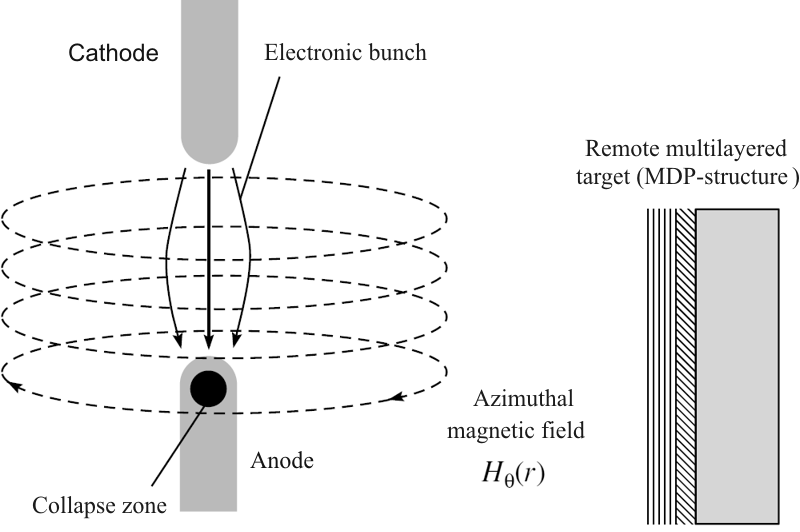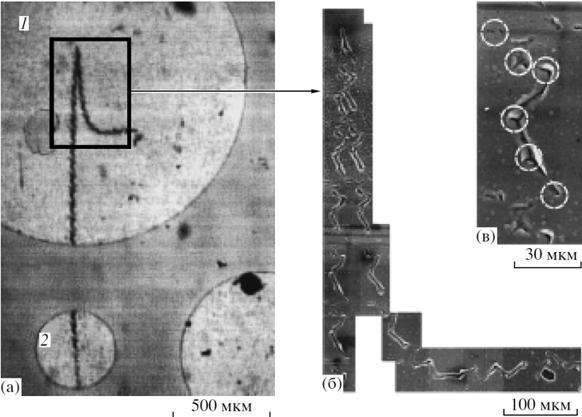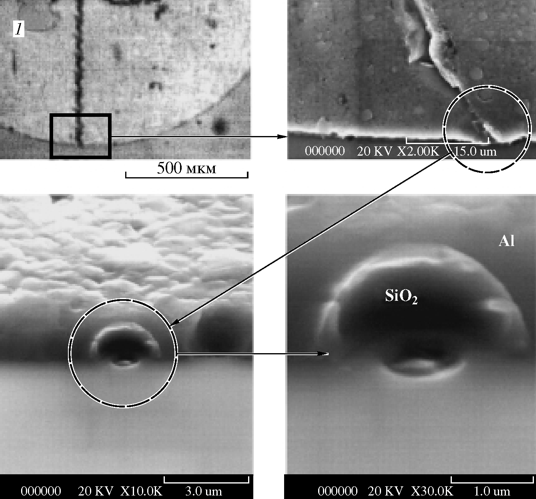|
Alexander
A.Shpilman ( alexandrshpilman78@gmail.com ) |
Discovery of magnetic monopole
or DSS elements?
To Electrodynamics Laboratory
"Proton-21" in Kiev since 1999 it is carry out about 10000
successful experiments on formation of a super dense condition of substance (a
condition of an electron-nuclear collapse) and accompanying fundamental
transformation of kernels with the help heavy-current the electronic driver in
the system similar heavy-current high-voltage diode (see Fig.1).
S.V.Adamenko and V.I.Vysotsky
write:
The repeated analysis of different types of
radiation and products of the nuclear transformations accompanying processes of
formation and the subsequent disintegration of a collapse, testifies that in
the field of a collapse in the course of pulse self-compression of a target
conditions (in particular, substance density), similar to what are characteristic for such astrophysical objects as white
dwarfs and neutron stars are reached.
|
Fig.1. Relative positioning of basic elements of
experimental installation |
Fig.2. The image of fragments of a
track on a surface of aluminium in around of 2 at different increase. |
Fig.3. A series of four consistently increased
pictures of the same fragment of a macrotrack on borders of a covering from
aluminium on a silicon surface: a, b - the top view on the MDS-structure
surface; c, d - a macrotrack input in volume of film SiO2. Being on between
silicon and aluminium (side view). In last pictures the border between light
and dark areas corresponds to border between silicon (below section border)
and aluminium (above section border). |
In these
experiments were registered as "traditional" products of nuclear
transformations ("normal" kernels with an abnormal isotope
proportion, fast protons and deuton, rigid gamma radiation, etc.), and stable
superheavy kernels with A> 270-300 and even with A> 400.
Besides,
in a number of specially carry out experiments, results of very strong ordered
thermo-mechanical influence on a surface of a multilayered target were
registered. Which was removed from a zone of a collapse and is orientated
perpendicularly to a direction on collapse area. Results of this influence (the Fig.2,3 see)
represent strictly periodic hollow macroscopical tracks (macrotracks) in volume
and on a target surface. The origin of macrotracks cannot be identified with
one of known particles. The analysis of characteristics of these macrotracks is
more low made and studying of properties of particles (presumably, particles
with a magnetic charge) which can form macrotracks is spent.
Problem of identification of a
periodic hollow macrotrack
The
relative positioning of basic elements of experimental apparatus is represented
on fig. 1. Passage of a bunch in the form of strong pulse current J (t) between
the cathode and the anode leads to occurrence of azimuthal magnetic field He
(r). Under the influence of a pulse current in the anode the zone of a
collapse of a part of substance of the anode is formed.
The
multilayered target was from collapse area on distance nearby 10 cm.
It
represented a part of standard structure metal-dielektrik-semiconductor (MDS),
consisting of plate Si covered with thin layer SiO2 and thicker
layer Al. The registered trace looked like a macroscopical hollow track
(channel) in shape oscillated a trajectory with the constant period of L ~ 60
microns which periodically went deep into target volume through layer Al (and
partly through SiO2) and there were on its surface, simultaneously
making fluctuations with amplitude about 20 microns in parallel target
surfaces. The total length of a continuous part of a track is equal L ~ 2000
microns, its width 3.5 microns, and a thickness - about 1.3 microns (it is
approximately equal to a thickness of layer Al). On a surface of a target near
places of a periodic exit of a track from volume fused and fallen asleep Al
there is a small amount of the fallen asleep silicon. The direction of an axis
of symmetry of a trajectory of the basic extensive a track consisting of two
pieces, approximately corresponded to a direction of a vector of intensity of
an azimuthal magnetic field of current He (r).
General
view of a surface of MDS-structure with oscillated a track and separate
fragments of a track on a surface and in volume Al, covering a substrate from Si,
are presented on fig. 2-3.
From
fig. 2 and 3 follows, that the track is present only at those spatially carried
areas of a surface of a target (area 1 and 2) where there was an aluminum
covering of a surface, and the track on two these areas was obvious
continuation of movement of one not identified particle. At the same time in
space between two areas with aluminium coverings any traces of interaction were
absent. Let's notice, that the layer from Al is a paramagnetic, and other two
layers of MDS-structure (Si and SiO2) - diamagnetics. Thus, strong
thermo-mechanical influence took place only within a paramagnetic. This effect
visually shows fig. 3 on which the entrance aperture of a track on a face
surface of aluminum is visible. This essential circumstance will be considered
further.
Let's
spend an estimation of the minimum energy necessary for formation of a
macrotrack.
If to start with a configuration of a periodic
track the volume and weight of the fused aluminium within a macrotrack are
equal VAl ~ 10-8 sm3, MAl ~ ~ 2.7 х 10-8 g.
Proceeding
from specific thermal capacity C ~ 0.9 Dzh/g•grade and sizes of specific warmth
of fusion AH ~ 30 Dzh/g aluminum, it is easy to define the minimum energy which
is necessary for spending for heating and aluminum fusion in macrotrack volume:
QAl = (CAT + AH)MAl ~ 1.5 x 10-5 Dzh ~ 105 GeV. (1)
If to
consider additional energy which has been spent for fusion and silicon emission,
on heating of other (not fused) part of aluminium, and also on ionisation of
all products in the field of a macrotrack the size of full energy can be
estimated as Qtot ~ 2 х 105 GeV. Specific allocation of energy appears extremely big, equal:
dQJdl = -Qtot/L ~ -106 GeV/cm. (2)
Let's
notice, that results (1) and (2) it is very essential (in 106 times)
differ from the data presented in work [1]. In this work it was informed on
registration on a film of periodic tracks similar under the form with specific
energy-release dW/dl ~ 1.5 GeV/cm. Authors have identified them
with result of photoregistration of "strange" radiation which they
connected with braking of Dirac monopole.
It will
be more low shown, that simple braking of particles (including with a magnetic
charge) is not capable to provide allocation of energy (1) and (2) and to
provide the observable form of a track. There is a natural question on what
particle could form such strictly ordered macroscopical track, having allocated
thus very big energy?
Constant
length of the period of fluctuations oscillated type trajectories of "a
tractor trace" and identical character of damage of surface Al within all
periods of a track testify that average forward speed of not identified
particle along all trajectory was invariable. If to consider all features of a
trajectory and very big energy-release which takes place at interaction of a
particle with a target it is obvious, that formation of such trajectory can be
connected with two scenarios:
1. With
a target surface the particle having very big kinetic energy Wk
which much more exceeded size Qtot and consequently the big
allocation of energy dQ/dl did not influence neither on Wk, nor on
character of movement of a particle and feature of its interaction with a
target co-operated.
2. The
particle had small speed v and rather small kinetic energy Wk, and
registered very big allocation of energy and formation of a macroscopical track
are connected by that the moving not identified particle stimulated course of
energo-favourable nuclear reactions along a movement trajectory.
The
first scenario is logically inconsistent and will not be co-ordinated with data
of experiments. It is caused by that the particle with the big kinetic energy
should have the big impulse. However it contradicts that the particle often and
ranked changed a trajectory and a movement direction, and in one point has
occurred very sharp (on a angle close to 180°) change of a direction of
movement. Such character of movement corresponds to particles with small energy
and a small impulse. But such particles cannot perform the big work on
destruction of a surface of a target! Besides, such scenario does not explain
absence of a track on a site of a surface pure Si, laying between two limited
layers from Al, being on a surface of the general substrate from Si.
The
second scenario is represented more proved, and we will consider it in details.
Within the limits of this scenario follows, that the hypothetical particle,
which interaction with a target forms a specific macrotrack, should satisfy to
a number of requirements:
1. It should stimulate course of
nuclear reactions with very big energy-release and local destruction of a
target.
2. Specific energy-release, stimulated
a particle, should be identical along all track.
3. She should not participate in
nuclear reactions, i.e. should get to a zone of reaction and leave it in an
invariable kind.
4. She should influence formation of
the ordered trajectory.
5. Its movement should be a miscellaneous in
paramagnetic and diamagnetic environments.
It is
obvious, that such requirements do not allow to identify it with one of known
neutral particles or particles with an electric charge. There are very much
strong reasons to assume, that such features of interaction can be connected
with movement of a particle with a magnetic charge (similar to one of versions Dirac monopole).
It is
necessary to note one more circumstance. Proceeding from a macrotrack kind (the
big number strictly periodic oscillations) can be made the conclusion that the
size of an operating magnetic field throughout all direct trajectory (to a
point of return reflexion in the top part fig.2) was approximately identical. It
corresponds to that duration of formation of this part of a track was
essentially less than full duration of an impulse of the current, equal T -
30-50 nanoseconds.
If
this duration was comparable with T the period oscillations in the beginning
and the track end would be essentially different. Proceeding from it it is
possible to assume, that duration of formation of this part of a track in
length L - 2 mm did not exceed T1 - 10 nanoseconds, and average
longitudinal speed of movement hypothetical magnetic-charged particle was more
than L/T1 - 2 x 107 cm/sec. The macrotrack going in
the opposite direction from a point of a branching, has been caused, most likely, by
reflexion from area of a local magnetic field, strong on size and directed to
an opposite side in relation to a current field. The researches spent with use
of an again-ionic mass spectrometer (SIMS), have found out presence at
a vicinity of a point of turn of a macrotrack (in area with radius about 15-20
microns) a considerable quantity of the localised iron and cobalt. These data give the basis to
assume, that in this place there was a small fragment magnetic-ordered domain
structure (micromagnet) with the strong field which has reflected
magnetic-charged a particle. Presence of an additional local magnetic field
explains the further curvature of a trajectory of a macrotrack and change of
its period oscillations, that is visible in the right bottom part fig.2б.
The literature list
1. Urutskoev L.I., Niksonov V. I, Tsinoev V.T.//the Applied physics.
2000. № 4. C. 83.
……………………………………………………………………………………………………………………..…………………………
Authors obviously state doubts that the trace was left by a certain
usual is high-energy particle.
Are not confident that a trace have left magnetic monopoles. Especially not clearly "very sharp (on a angle close to 180 °) change of a direction of movement" and "in a
vicinity of a point of turn of a macrotrack (in area with radius about 15-20
microns) a considerable quantity of the localised iron and cobalt". If the
unknown particle "stimulates course of nuclear reactions" why occurrence of new
elements, "a considerable quantity of the localised iron and cobalt", is found
out only in a point of turn of "track"? And the main thing why
authors are assured what is a track, instead of a imprint? A habit tribute?
Also, "it is necessary to note one more circumstance.
Proceeding from a macrotrack kind (the big number strictly periodic
oscillations) can be made the conclusion that the size of an operating magnetic
field throughout all direct trajectory (to a point of return reflexion in the
top part fig.2) was approximately identical. It corresponds to that duration of
formation of this part of a track was essentially less than full duration of an
impulse of the current, equal T - 30-50 nanoseconds" - it is possible to
assume that own magnetic field of "track" many times more than an
external magnetic field, in zone of target installation. In last variant time
characteristics can be essential others which can be defined on character
fusion aluminium and adjoining silicon. (At times in 30-50 nanoseconds, it is
possible to expect explosive evaporation, instead of fusion more likely.)
Let's make small
deviation from a theme.
For much such indicative
experiment is known:
On a surface of the inclined
thick sheet of copper or aluminium lower a constant magnet. Sliding of the last
is strongly braked, and even there is an impression that the magnet nestles on
conductor sheet more strongly. Similar experiment - a constant magnet throw in
a vertical pipe from copper or aluminium.
Standard explanation - magnet movement Foucault's vortical currents
brake. But the total mass electrons involved in vortical movement of many times
less mass of a constant magnet is held back that. And then, what prevents to be
displaced to an electronic whirlwind after a sliding magnet?
It is logical to assume that "free" electrons, in an electric
conductor, actually are not free. There is a certain grid of electrowire
bridges between atoms of a conductor, on which electrons move. This is grid
adheres set of whirlwinds of currents of Foucault to a crystal lattice. But,
experiment with replacement of continuous sheet of a conductor by sawdust,
shows that braking of movement of a constant magnet becomes imperceptible. I.e.
electrowire "bridges" between atoms of a conductor it not the local
phenomenon. "Bridges" prove in
macro-scales.
In the experiment shown in a Fig. 1, the strongest impulse of an
electric current the copper conductor of the anode of the diode blows up. The
product of emission of the explosion, fixed on a target (the Fig. 2), can and
is that cluster atoms of a conductor with its two "bridges".
That I represent these bridges. Independently, electronic clouds of
their atom cannot form. It is necessary to assume, that this display yet not
studied certain properties of kernels of atoms. Thus there is a question - why
presence at "cluster" two "bridges" is characteristic?
Division occurs on certain their characteristic individual properties? On a
spin, to the magnetic moment, an electric charge?
What do we know about an atom kernel? What does it consist of protons
and neutrons, and those, in turn, consist of quarks? Instead of whether are
these "bridges" of quark structures baryon display ?
Why "bridges" were obviously showed in similar experiment?
Because the dense electronic stream has essentially increased their internal
energy? The specific mass of "bridges" has increased and the total
electric charge grasped of electron shas accordingly increased? And liberation
of these grasped electrons, at disintegration of "bridges", caused
aluminium fusing?
For the first time having seen an original V-shaped print in S.V.Adamenko and V.I.Vysotsky's article (the Fig. 2 see) at once there is an association with what it
is necessary to deal in generators "axion fields". Approximately
there correspond also the characteristic geometrical sizes. And occurrence of
new chemical elements, for example, observed M. Sue Benford ("Probable Axion Detection via
Consistent Radiographic Findings after Exposure to a Shpilman Axion Generator"). That is interesting, contact of
an aluminium foil to a x-ray film was used.
How it is possible to check up conformity? On reaction of
"bridges" to external magnetic vector potential?


